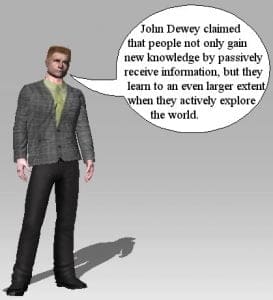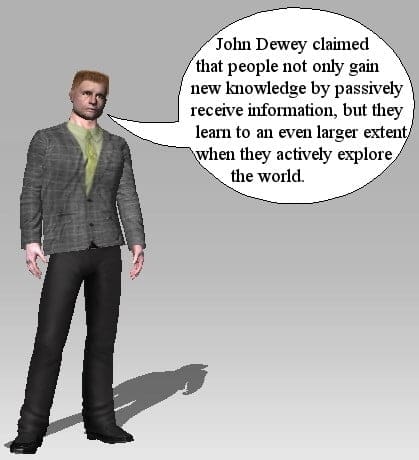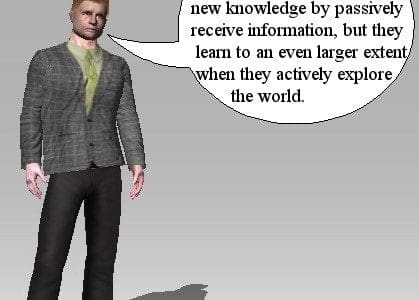 The term ”learning by doing” is
The term ”learning by doing” is ![]() often used to summarise the pedagogic ideas of the philosopher John Dewey (1859-1952). However, Dewey never used the term in his own pedagogic writings, but it describes well his vision for learning. He claimed that people not only gain new knowledge by passively receive information, but they learn to an even larger extent when they actively explore the world.
often used to summarise the pedagogic ideas of the philosopher John Dewey (1859-1952). However, Dewey never used the term in his own pedagogic writings, but it describes well his vision for learning. He claimed that people not only gain new knowledge by passively receive information, but they learn to an even larger extent when they actively explore the world.
Learning by doing with the disability movement
Learning by doing that also is termed collaborative learning has been used successfully by the disability movement to create understanding about their situation. Politicians and other decision-makers for instance have been placed in a wheelchair or with glasses with limited field of view. Then they have been asked to move in a city-environment with high curb stones and stairs.
Creating interactive courses
In recent years the computer-based virtual development has created a whole new dimension for the basic aim to practice different skills and knowledge in real time. The following four “engines” are important to create interactive course content. Simulations, virtual games, pedagogically structured exercises and tasks, and finally the core of John Dewey’s ideas, to actively explore the world, in this case with internet research. This content could be structured according to linear-, cyclic or systematic method. In part 2 in this series of articles I will dig deeper into what these three methods include.
Written by
LarsGöran Boström©
Opens in a new tab



